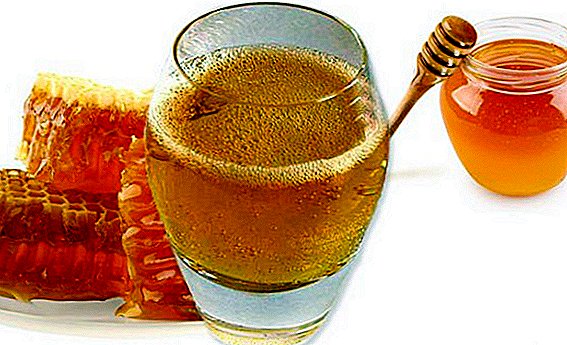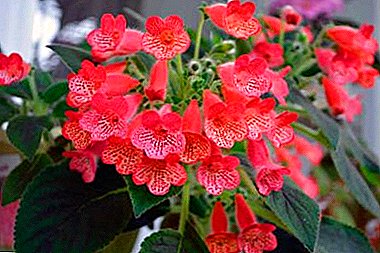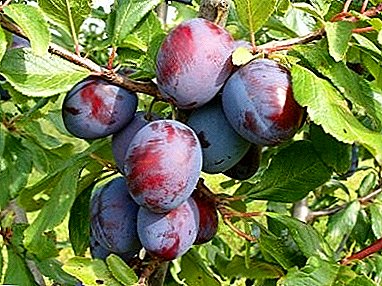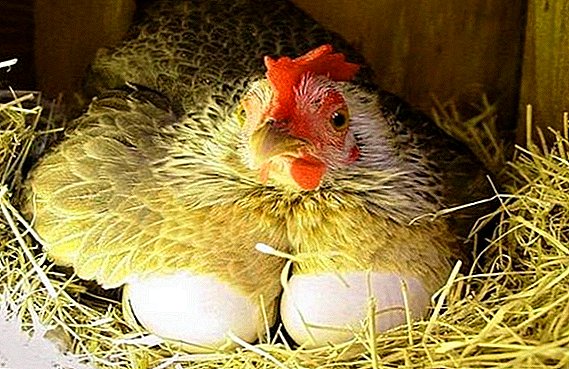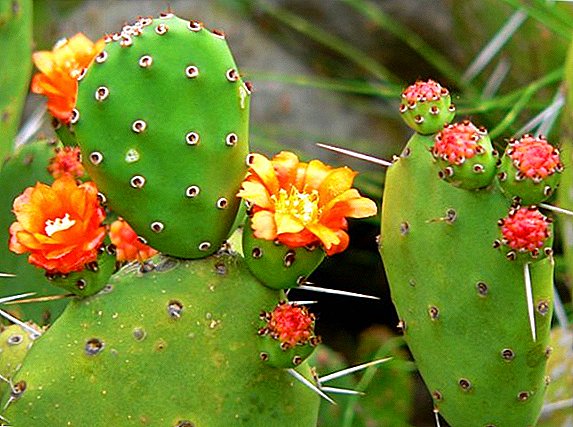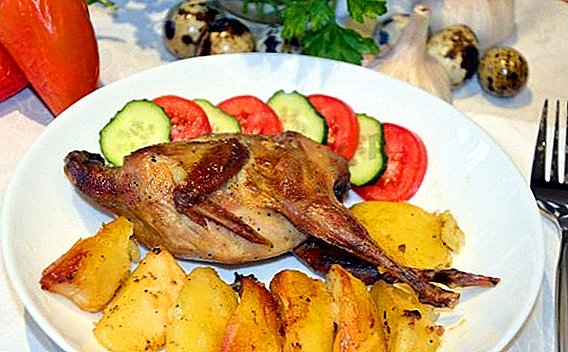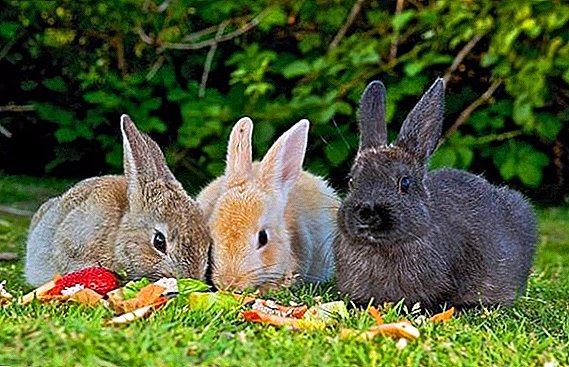 From the point of view of its breeding, the rabbit is a universal animal. Its meat is considered dietary and has excellent taste, rabbit fur is used for sewing hats, fur coats and other clothes, the skins unsuitable for this are used as raw materials for the manufacture of gloves and even shoes. Decorative rabbit rearing is also quite common. This article will tell all about feeding rabbits at home for beginners and will not be superfluous for already experienced breeders.
From the point of view of its breeding, the rabbit is a universal animal. Its meat is considered dietary and has excellent taste, rabbit fur is used for sewing hats, fur coats and other clothes, the skins unsuitable for this are used as raw materials for the manufacture of gloves and even shoes. Decorative rabbit rearing is also quite common. This article will tell all about feeding rabbits at home for beginners and will not be superfluous for already experienced breeders.
Why is the right diet for rabbits so important
Regardless of what goal the breeder sets himself, proper nutrition for the animal is necessary: it directly affects both the appearance of the skin and the quality of the meat, and the health, longevity and fertility of the rabbits. These rodents have very weak muscles of the stomach, and the length of their intestines is about ten times the body of the animal. Therefore, the stomach and intestines of the rabbit must be constantly filled with food and fluid.
 The digestive system in rabbits, unlike other animals, works almost continuously, during the day the rodent in small doses takes food several dozen times. therefore in the direct access of the rabbit should always be stocks of clean water and hay.
The digestive system in rabbits, unlike other animals, works almost continuously, during the day the rodent in small doses takes food several dozen times. therefore in the direct access of the rabbit should always be stocks of clean water and hay.
The digestive tract of rabbits is a rather sensitive system, the disturbances of which caused by infections, parasites, and also improper feeding, have a direct effect on the immunity of the animal. So, in the diet must be present as crushed (grass, leaves, tops), and large solid food (bark and tree branches), the absence of which can lead to various disorders, in particular, to diarrhea. Food should contain enough fiber and protein. Starch is needed in metered quantities - both its excess and lack of a negative effect on the work of the rabbit gastrointestinal tract. The correct intestinal microflora provides grass. Chlorophyll contained in it, in addition, oxygenates the blood of the animal, strengthens the cells, enhances recovery functions and strengthens the immune system.
The rate at which food passes through their intestines and, consequently, the general state of health, appearance, size, quality of wool and the lifespan of rodents, depends on what rabbits eat at home.
What to feed rabbits, types of feed
 Being in a natural environment, rabbits independently provide themselves with a proper and healthy diet. However, the success of reproduction of animals in captivity requires a clear understanding of how to properly feed rabbits at home, observing the balance of all the necessary animal nutrients and vitamins. The diet of rodents for this should consist of several types of feed, among which must be present: green, juicy, coarse and concentrated feed.
Being in a natural environment, rabbits independently provide themselves with a proper and healthy diet. However, the success of reproduction of animals in captivity requires a clear understanding of how to properly feed rabbits at home, observing the balance of all the necessary animal nutrients and vitamins. The diet of rodents for this should consist of several types of feed, among which must be present: green, juicy, coarse and concentrated feed.
Green feed
The diet of feeding rabbits at home must necessarily include green vegetation, fruit and vegetable peels. This food is rich in fiber, which has a beneficial effect on the digestive system of the animal and normalizes its intestinal functions.
Green feed is used in feeding rabbits during the whole warm season - from spring to late autumn. Such food can be prepared independently using meadow grasses, cereals and legumes, as well as tops of various vegetables, and these types of greens must be combined and alternated, since, for example, an excess of legumes often causes flatulence in animals. For mowing, young grass should be chosen; it is better absorbed by the digestive system of rabbits.
 Treats for rabbit are clover, alfalfa, nettle, plantain, dandelion, sorrel, sow thistle, among cereals - oats, barley and corn. Vegetable tops of carrots, black radish, beets, swede, Jerusalem artichoke, cabbage is a good component of green fodder.
Treats for rabbit are clover, alfalfa, nettle, plantain, dandelion, sorrel, sow thistle, among cereals - oats, barley and corn. Vegetable tops of carrots, black radish, beets, swede, Jerusalem artichoke, cabbage is a good component of green fodder.
Important! When using beet tops you need to be careful when mixing it with plants that can neutralize its laxative effect. This function can be performed by foliage or branches of oak, yarrow grass, etc.
In order to avoid digestive disorders, the share of vegetable tops, leaves and peel in the total mass of green fodder should not exceed a third.
Succulent feed
In autumn and winter, when the amount of fresh greens is limited, succulent feeds become very important in the diet of rabbits. These include various vegetable crops, as well as silage - a kind of rabbit canned food. This type of food is easily digested and well absorbed by animals, improves digestion, as well as lactation. The beneficial properties of succulent feeds are determined by their high content of vitamins, carbohydrates and water, their disadvantages include low levels of protein, fiber and minerals.
The rabbit growers' favorite vegetable is red (not dining!) And yellow carrots, in winter it is simply indispensable for replenishing the rabbit's body with carotene, vitamins of group B and C. The young rabbits begin to add a few dozen grams of carrots to their diet from three weeks of age, and this dose gradually increases, reaching four hundred grams per day for growing an animal, regardless of the season. Carrots in the summer give fresh, mixed with vegetable tops, in the winter, if necessary, dried.
 Feed types of cabbage provide rabbits with vitamin K, protein and minerals such as calcium, sulfur, phosphorus, iron. Cabbage is beautifully stored and does not need to be dried, however, it can be ensiled. It is very useful for rabbit skins, although with overdose it can cause digestive disorders.
Feed types of cabbage provide rabbits with vitamin K, protein and minerals such as calcium, sulfur, phosphorus, iron. Cabbage is beautifully stored and does not need to be dried, however, it can be ensiled. It is very useful for rabbit skins, although with overdose it can cause digestive disorders.
Important! Tomato shoots can not be used as feed for rabbits. Potato tops can be added to the diet in very small doses, but you must be sure that the plant has not been exposed to any pesticides.
Beetroot in fresh, dried or ensiled form is also used as a succulent feed, and sugar is much better absorbed by animals than fodder.. Like cabbage, in large doses causes diarrhea, so it should be used with caution. Even more nutritious food for rabbits is swede.
Sometimes rabbits are fed potatoes, however, since there is too much starch in it, it should be boiled and mixed with bran or combined feed.
Such succulent crops as watermelon fodder (it is less sweet), zucchini and pumpkin have well proven themselves as succulent feeds for rabbits. They can be used in raw or ensiled form, in various mixtures. Pumpkin can also boil and puree. Gourds have a beneficial effect on the quality of animal hair, as well as contribute to better assimilation of other types of feed.
 The leaves and petioles of rhubarb are very useful for rabbits due to the malic, citric, oxalic and ascorbic acids contained in them.
The leaves and petioles of rhubarb are very useful for rabbits due to the malic, citric, oxalic and ascorbic acids contained in them.
A special type of succulent feed is silage, which contains a large amount of vitamins and trace elements. It can be prepared by yourself, which will significantly save the cost of feeding. For this, various fruits and vegetables, tops, and even weeds are used.
Did you know? Not all products are equally well ensiled. Some plants in the compacted form begin to actively produce lactic acid, which, in turn, promotes the appearance of various bacteria and fungi, including mold. Gourds, corn stalks and cobs, pea and bean whips, cabbage, sunflower are suitable for siloing. Clover, nettle, soybeans are ensiled poorly, they need to be added to the workpiece in small portions. Potato, cucumber, watermelon, beet tops are not used in the preparation of silage at all.
All the mass collected for ensiling must be chopped, mixed and put into prepared containers (wooden or metal barrels, buckets, plastic bags, etc.), it is good to tamp before juicing and seal it (for example, by filling the mass with sawdust and smearing the neck with clay) . To speed up the ensiling process, up to a tenth of boiled potato or mealy paste is sometimes added to the tank.
Before the first feeding of animals with silage, it is necessary to ensure that there is no smell of mold or rot. (The correct silo smells like sauerkraut) and enter into the diet gradually, mixing with bran or other types of feed.
Roughage
 The main source of fiber, vital for a normal digestive process in a rabbit, is roughage: twigs, hay, straw, and grass meal. They are also rich in vitamins, minerals and protein.
The main source of fiber, vital for a normal digestive process in a rabbit, is roughage: twigs, hay, straw, and grass meal. They are also rich in vitamins, minerals and protein.
In the composition of roughage the main component is hay, especially necessary for rabbit and lactating females. It is best to use hay from young grasses, dried in a place protected from direct sunlight, as well as straw from legumes and cereals (oats, millet).
Spruce feed additives should be harvested in mid-summer, tying and hanging out in well ventilated areas. In winter, branches are best kept right in the snow. Young shoots of fruit trees (plum, apple) and shrubs (raspberries), as well as willow and willow vine, branches of maple, acacia, aspen, linden, less often - birch are suitable for this. Coniferous branches (juniper, pine, spruce) are very fragrant, rabbits gnaw them with pleasure.
Grass meal is made from dried hay or grass. It is used as an additive in soft food in a ratio of about 1: 4.
Concentrated feed
Concentrated rabbit feeds include cereals (oats, corn, barley, wheat, rye), leguminous fruits (peas, lentils, soybeans, beans), waste from the production of oil, and animal feed (meat and bone meal and fish meal).
 This type of food is the richest in protein and other nutrients, so its share should be at least one third of the total rabbit diet, and sometimes, depending on the age and physiological condition of the animal, as well as the nutritional value of other types of feed, and above. The increase in concentrated feed in the diet leads to increased growth of the animal and a positive effect on lactation.
This type of food is the richest in protein and other nutrients, so its share should be at least one third of the total rabbit diet, and sometimes, depending on the age and physiological condition of the animal, as well as the nutritional value of other types of feed, and above. The increase in concentrated feed in the diet leads to increased growth of the animal and a positive effect on lactation.
The most suitable grain for feeding rabbits is oats. It can be given as a whole or crushed, without fear of an overdose. It is a diet food that is very useful for intestinal motility and, moreover, does not lead to obesity.
Nutrients, though not sufficiently rich in amino acids and protein, are corn kernels, but they must first be soaked or detailed. Also, rabbits are given porridge.
Wheat, barley (without a shell), and rye are used as an additive to other feeds, grain should first be germinated and yeast, in order to increase the content of vitamins in it and increase digestibility. To feed animals with such grain in order to avoid fermentation in the intestine can be no more than four days in a row.
Food concentrates such as bran (mainly wheat), as well as meal and cake obtained from flax, soybean, sunflower and hemp are used as concentrated feed.
 Animal flour is added to wet foods in small portions to enrich the diet of rabbits with calcium and phosphorus. In addition, from animal food, rabbits eat a silkworm pupa, and in very limited quantities milk and whey.
Animal flour is added to wet foods in small portions to enrich the diet of rabbits with calcium and phosphorus. In addition, from animal food, rabbits eat a silkworm pupa, and in very limited quantities milk and whey.
Compound feed is necessary for rabbits as a condition for a balanced diet, since it includes all the nutrients, mineral supplements and vitamins necessary for rodents.
Did you know? Rabbits are often fed the same feeds as pigs, as well as calves, but in no case should feed them feed for poultry, as they contain shell rock and small stones that the rabbit's digestive system cannot cope with.
Granulated feeds designed specifically for rabbits can be used as a basic ration without adding other types of concentrate. However, for females during pregnancy and lactation, it is necessary to additionally have at least 40% of cereals.
Use of vitamin and mineral supplements when feeding
Vitamins should be used as additives to the main diet of rabbits during the cold period, especially by the end of winter, since by this time the amount of green and succulent fodder is very limited. Fish oil can restore the body's need for vitamins A and D. The little rabbit is given a substance at the rate of up to half a gram per individual, for adult rabbits - twice as much, for pregnant and lactating females - up to three grams.
 Vitamin E rabbits receive in the composition of hay or germinated grain, as well as from artificially grown green grass and culinary yeast. Phosphorus and calcium are found in bone meal, bone ash, or regular chalk. Rabbits also need table salt. Her daily rate for rabbits is from half to one gram, for adults - up to one and a half grams, for nursing females - up to three grams.
Vitamin E rabbits receive in the composition of hay or germinated grain, as well as from artificially grown green grass and culinary yeast. Phosphorus and calcium are found in bone meal, bone ash, or regular chalk. Rabbits also need table salt. Her daily rate for rabbits is from half to one gram, for adults - up to one and a half grams, for nursing females - up to three grams.
How to feed the rabbits, make up the diet
The diet of rabbits is very different not only depending on the breed of the animal, its age and condition, but also on the season. Knowing the main differences between the summer ration and the winter ration, it is possible to achieve substantial savings in resources and a more balanced feeding regime.
Summer diet
In summer, the main food of the rabbit is green fodder. Only small amounts of dry hay or straw should be added to them to help the animal cope with the excessive amount of moisture contained in the grass and fresh vegetables that can cause diarrhea and bloating.
When feeding rabbits with wet silage, dry supplements are also necessary.
Features of feeding rabbits in winter
The question of what feeds rabbits at home in winter is more difficult. In this period of time, food needs to be really balanced.  First of all, it is necessary to ensure the stock of good quality hay, since it contains the necessary substances for the health of the animal.
First of all, it is necessary to ensure the stock of good quality hay, since it contains the necessary substances for the health of the animal.
Juicy feed in the winter should be used correctly: those products that can be stored for a long time, for example, carrots, pumpkin, kale, it is better to use fresh, others - harvested in the form of silage or dried. In small quantities, rabbits enjoy eating sauerkraut. Branching feed should also be prepared in advance, and the most useful in winter are the branches of coniferous trees, as well as their needles (needles).
The main part of the winter diet is concentrated feed.
It should also be remembered that when the temperature drops, the calorie content of the rabbit ration should be increased. It is good at this time to give animals warm food (for example, cereals). Particular attention should be paid to the condition of the feeders: in the cold, the food in them can freeze, which cannot be allowed.
What can not feed the rabbits
 As repeatedly mentioned, rabbits have a very weak digestive system, so their successful breeding is unthinkable without adhering to feeding technology.
As repeatedly mentioned, rabbits have a very weak digestive system, so their successful breeding is unthinkable without adhering to feeding technology.
However, if an improperly balanced diet can lead to an animal's disease, slowing its growth or reducing fertility, which, in general, can be corrected, then some plants added to the composition of green fodder, hay or silage, can completely destroy all livestock.
In particular, you can not feed the rabbit:
- such herbs as spurge, aloe, periwinkle, seaweed, celandine, begonia, cloves, mustard, snowdrop, fern and others;
- iceberg lettuce;
- red cabbage;
- mushrooms;
- sugar;
- flour products;
- elderberry, wolfberry, avocado, figs;
- nuts and peanuts;
- chocolate, halvah, honey and other sweets;
- tomatoes and garlic;
- cereal mixture in the form of muesli, dried apricots, fruit pits;
- unpeeled peas and corn (their husks cannot be digested by the rabbit's stomach).


